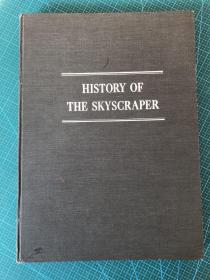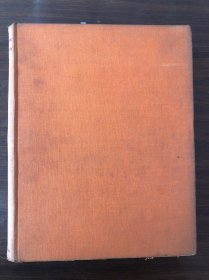
History of the Skyscraper (摩天大楼的历史);作者:Francisco Mujica
尺寸:43x31厘米 ;the first major illustrated history of highrise buildings,and an invaluable source book;下拉页面见【详细描述】
¥ 15000 九品
仅1件
上海杨浦
认证卖家担保交易快速发货售后保障
作者Francisco mujica
出版社不详
出版时间1929
装帧精装
尺寸43 × 31 cm
货号406
上书时间2022-12-11

Rare ArchiBooks书
七年老店
进店
收藏店铺
- 在售商品 暂无
- 平均发货时间 暂无
- 好评率 暂无
- 最新上架
商品详情
- 品相描述:九品
- 商品描述
-
Mujica's History of the Skyscraper is, in the words of Michael R. Corbett (SAH Journal vol. 37, no. 3, Oct. 1978, pp. 224-225), "the first major illustrated his- tory of highrise buildings, and an invaluable source book." The original edition was a remarkably beauti- ful volume, again in Corbett's words, "potentially of as much interest to bibliophiles as to architectural historians." It is interesting to note that this pio- neering work on U.S. architecture was not produced by a Chicagoan or a New Yorker, but by someone who became fascinated with skyscrapers by way of his intense interest in Meso-American architecture, particularly in the pyramids of Mexico. Mujica was born in Peru, trained in Chile and practiced archi- tecture in Mexico. The History of the Skyscraper was actually published in Paris, in 1929, in a small edi- tion and a year later reprinted in New York in a larger edition. There now exists also a reprint, by the Da Capo Press (1977).
Mujica calls skyscraper architecture "Neo-Ameri- can" as though he saw it as a continuation of the pre- Columbian architecture he had studied earlier. In a long and rather muddled introduction, however, he also invokes Vitruvius (whom he calls Vitrubio). In Chapter 2 he finally comes to the evolution of the skeleton skyscraper. He documents this evolution in a series of spectacular illustrations by various pho- tographers and renderers (even Hugh Ferriss is included), and also with plans and sections. New York and Chicago are the focal points, but many other American cities are represented. Mujica even shows one of his own designs: a 68-story office building in "Neo-American style"(a sort of Mayan Art Deco).
To Mujica, the pioneers of skyscraper design are W.L.B. Jenney, George B. Post, Frederick Baumann, Holabird and Roche, L.S. Buffington and Burnham & Root. He pays formal homage to them on a front page. The total omission of Louis Henry Sullivan seems glaring. Why Sullivan did not fit into Mujica's scheme is not evident. In any case, in the end it is the marvelous illustrative material on which the importance and unique usefulness of the book will always rest.
— 没有更多了 —












以下为对购买帮助不大的评价